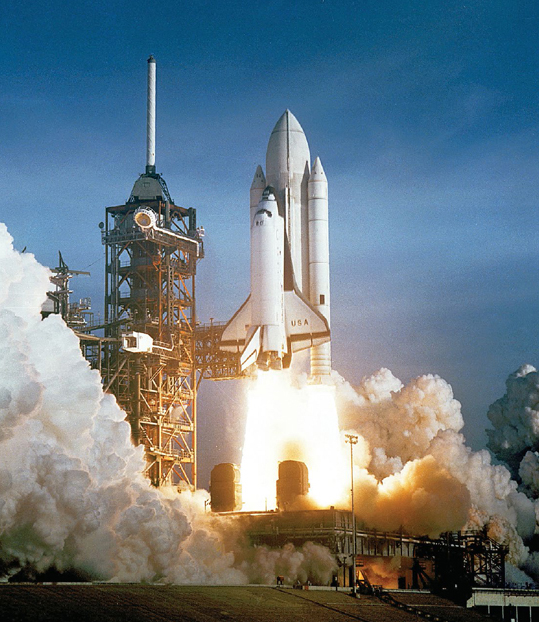1981
Space Shuttle
The dream of human space flight as first envisioned by rocketry pioneers Konstantin Tsiolkovsky and Robert Goddard has never been about one-way trips into space. Rather, the full impact of people voyaging beyond our planet is only truly realized when they return home and share their adventure stories (and scientific findings and samples) with the rest of us. But to get people (or payloads) to and from space requires the rocket to carry return capsules, parachutes, and supplies. In the Vostok, Mercury, Gemini, and Apollo astronaut programs, each return capsule and system was only used once.
For as long as engineers have thought about rocket designs, they’ve thought about reusable rocket designs, not only as ways to slash the cost of getting people and equipment into space but also as a means of making access to space a matter of routine, as commercial airline travel is today. This was the motivation for NASA’s development of the National Space Transportation System, known as the space shuttle, in the 1970s.
Space shuttles used a reusable orbiter vehicle for the crew and equipment (with rocket engines for ascent and airplane-like wings for descent), two reusable solid-fuel rockets, and a large expendable tank to fuel the orbiter’s engines during launch. Five orbiters were built and flown in space (Columbia, Challenger, Discovery, Atlantis, and Endeavour) between the first launch in 1981 and the 135th and last in 2011, carrying 355 astronauts (some on multiple flights) into low Earth orbit—about 250 miles (400 kilometers) above the surface. Fourteen astronauts lost their lives in the line of duty: seven in Challenger, which exploded on launch in 1986, and seven in Columbia, which broke up on reentry in 2003.
Despite never becoming routine, and never realizing the hope of more economical access to space, the missions of the space shuttle were still incredibly successful overall. Shuttles were critical for construction of the International Space Station, for the repair and servicing of the Hubble Space Telescope, for the launch of numerous Earth and planetary satellites, and for important space-related biological, astronomical, and Earth sciences research. Now that the space shuttle fleet is retired, NASA plans to build a new rocket system capable of carrying astronauts past the shuttle’s limit of low Earth orbit—back to the Moon or on to new destinations, such as near-Earth asteroids and Mars and its moons.
SEE ALSO First on the Moon (1969), Second on the Moon (1969), Fra Mauro Formation (1971), Roving on the Moon (1971), Lunar Highlands (1972), Last on the Moon (1972), Hubble Space Telescope (1990), International Space Station (1998).
The first NASA space shuttle (Columbia) launched from Cape Kennedy, Florida, on April 12, 1981. Astronauts John Young and Robert Crippen piloted the orbiter to a safe landing two days later.
